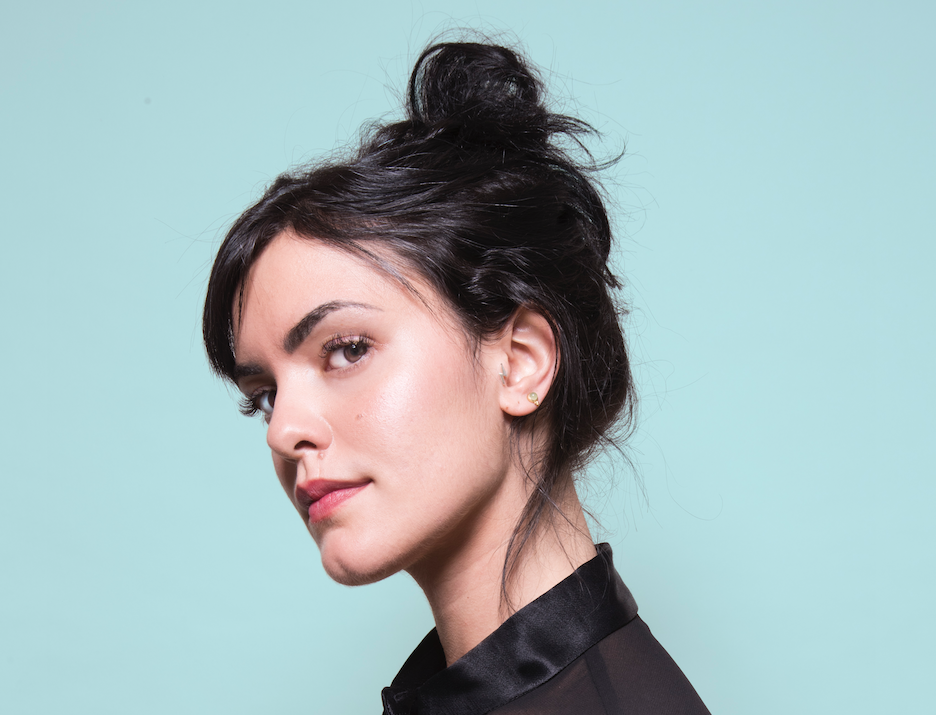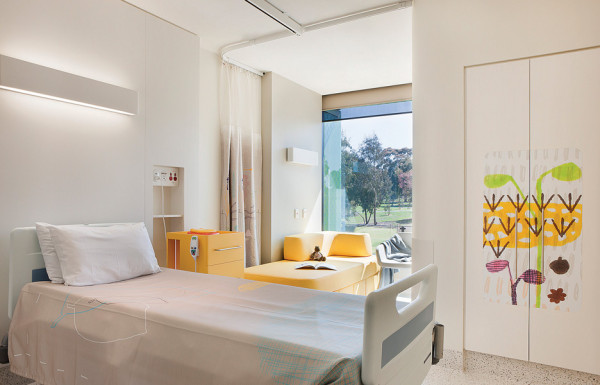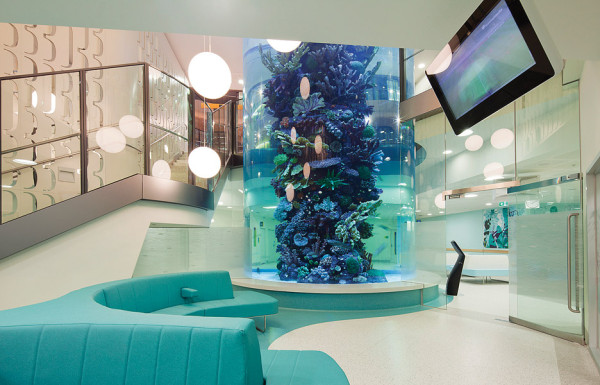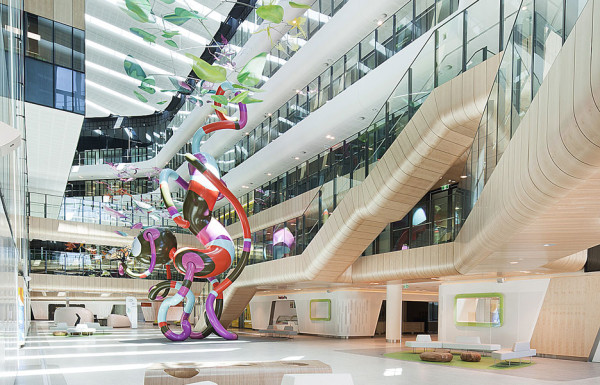
Healthy interiors at the Royal Children’s Hospital
Healthy interiors at the Royal Children’s Hospital
Share
Above image: Billard Leece Partnership and Bates Smart’s Royal Children’s Hospital. Photo by John Gollings
From afar, clad in rows of delicate coloured glass fins, it’s not difficult to imagine the Royal Children’s Hospital as a living thing; a diaphanous, architectural flower. Bates Smart’s Parkville refurbishment is a vital replacement to worn and dreary facilities, and a celebrated addition to the Melbourne health precinct. Such is the site’s sensitivity to its surroundings that it seems to bloom organically, a structural expression of nature against the green backdrop of Royal Park.
Conceptually, the natural world was an abundant source of inspiration, for its restorative properties as much as its symbiosis within the park setting. Design Director Jeff Copolov explains, “The health department’s brief had a very clear vision: about creating a hospital that was family friendly, looked at new models of care, how wellness can be brought in, how a physical environment and its relationship to nature can assist with recovery and good health, beyond the purely clinical”. This became the standard from which all design decisions were driven.
For Bates Smart Director Kristen Whittle and the project’s Lead Interior Designer Mark Healey, the space was conceived to feel as though “The Park was in the building as much as the building was in The Park”. The hospital’s vast entranceway, Main Street, bends into Royal Park, while six storey high glass provides natural light and views throughout. Healey cites evidence-based principles, which suggest that, “a person with a view to nature will get better quicker”. Research into Salutogenic design; the effects of environmental design on medical outcomes, was key to re-imagining a modern space for healing.
Being a children’s hospital, Bates Smart committed to tailoring the healthcare experience to little patients. Nature in various guises provides welcome forms of distraction and entertainment for ailing kids. The popular resident tribe of lively meerkats are maintained by Melbourne Zoo, while tropical fish hypnotise children and adults alike, in the cylindrical two-storey coral reef aquarium on Main Street.
Interiors carry the joyous energy of these live displays using vibrant murals by Melbourne illustrator Jane Reiseger. Inspired by Victoria’s natural environments, colourful scenes are scattered with playful animals, encouraging a child’s imagination and inspiring family games and stories. The murals are integral to the hospital’s way-finding system, easily navigated by all ages and nationalities. Each level corresponds to a unique palette and scene, different animals representing each wing of a ward. “Children navigate their way around a large institution not by way of signs, but by landmarks,” Healey explains. These functional landmarks give spaces identities that are inviting and familiar; a departure from traditionally intimidating, featureless hospitals.
The new hospital’s intentions are illustrated by the resident with the most personality: a 14 metre high tangle of limbs and a kind face known simply as “The Creature”. The sculpture by Melbourne artist Alexander Knox is made of steel tubing, designed on software used to build spaceships. The Creature sits impossibly lightly on three points; a feat of structural engineering that belies its 8 tonne weight. On its outstretched tentacle rests a butterfly, and this compassionate interaction communicates Knox’s message; of big things taking care of small things. It lives in Main Street as a well-loved talking point, successful way-finding device and part-time playground. The Creature is an ideal analogy for The Royal Children’s Hospital – which, though enormous and alien, nurtures the smallest and most fragile among us.
The hospital received international acclaim upon completion in 2012, and was officially opened by Queen Elizabeth II. This signified a moment of recognition for many thousands who worked on the hospital, as Copolov states “We were only a tiny cog in getting that thing done. A huge amount of people had a genuine emotional commitment to that place unlike any other project I’ve ever worked on”. The hospital won numerous awards, and was Overall Winner of that year’s IDEA. Having himself been a judge for IDEA, Copolov muses, “I think the legacy that one would hope for it is that it just raises the bar. The more we can do to raise the standards and expectations in design, the better”.
Bates Smart’s ethos pushes boundaries in redefining what a space is and can be, using thoughtful, considered design. Their humanistic approach makes each innovation seem effortless, inevitable; a natural evolution in design borne of necessity for change. The new Royal Children’s Hospital is an optimistic space breathing youth and vitality, contributing immeasurably to the health and quality of life of all who work, care and are cared for within. But perhaps the best measure of the project’s success is, as Mark Healey recalls, “Seeing kids having tantrums leaving the place because they don’t want to – as opposed to having tantrums being pulled into the place. It’s kind of a nice thing.”
This interview with IDEA winners Bates Smart appears as part of a retrospective series, featuring in the anticipation of this year’s awards, on Friday 21 November.
Bates Smart is nominated in various categories at IDEA 2014, including Sustainability and Public Space.
Click for your tickets to the highly anticipated IDEA 2014 Gala party!
You Might also Like


























